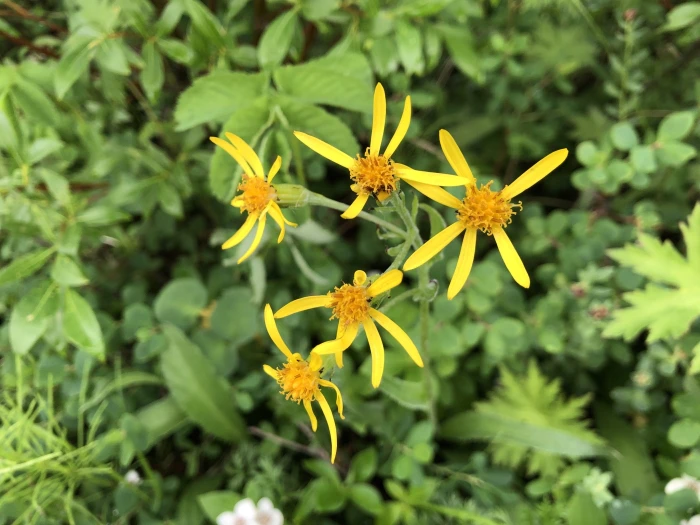Glacier Groundsel
(Senecio lugens)
Glacier Groundsel (Senecio lugens)
/
/

© Jason Grant
CC BY 4.0
Image By:
© Jason Grant
Recorded By:
Copyright:
CC BY 4.0
Copyright Notice:
Photo by: © Jason Grant | License Type: CC BY 4.0 | License URL: http://creativecommons.org/licenses/by/4.0/ | Uploader: jasonrgrant | Publisher: iNaturalist |

























Estimated Native Range
Climate Requirements for New Britain, Connecticut
| This Plant | Your Site | Plant Suitability for Your Location | ||
|---|---|---|---|---|
| • Precipitation | 5" - 186" | 46" | Aquatic | Aquatic |
| • High Temp. | 33°F - 92°F | 85°F | Your summer temperatures are normal for this plant. | Excellent |
| • Low Temp. | -34°F - 32°F | 18°F | Your winter temperatures are normal for this plant | Excellent |
This plant may not grow well at your location - your precipitation is too high.
Summary
Senecio lugens, commonly known as Glacier Groundsel, is a perennial herb native to Subarctic America to the Northwest U.S.A. It is adapted to the harsh conditions of its native habitat, including cold temperatures, strong winds, and poor, well-drained soils. Glacier Groundsel typically grows to a modest height of 12-18 inches (30-45 centimeters) with a similar spread, and features a rosette of lance-shaped leaves. During its flowering season, which occurs in the summer months, it produces bright yellow, daisy-like flowers that are quite showy and attract pollinators.
Glacier Groundsel is appreciated for its hardiness and unique appearance, making it a suitable choice for rock gardens, alpine collections, and as a ground cover in areas with similar environmental conditions to its native habitat. It requires minimal maintenance once established, thriving in full sun to part shade and preferring soils with good drainage. While it is not commonly cultivated, its striking yellow flowers and adaptability to poor soils can be beneficial in specialized garden settings. However, due to its potential for invasiveness, gardeners should be cautious and consult local regulations before planting.CC BY-SA 4.0
Glacier Groundsel is appreciated for its hardiness and unique appearance, making it a suitable choice for rock gardens, alpine collections, and as a ground cover in areas with similar environmental conditions to its native habitat. It requires minimal maintenance once established, thriving in full sun to part shade and preferring soils with good drainage. While it is not commonly cultivated, its striking yellow flowers and adaptability to poor soils can be beneficial in specialized garden settings. However, due to its potential for invasiveness, gardeners should be cautious and consult local regulations before planting.CC BY-SA 4.0
Plant Description
- Plant Type:
- Height: 1.5-2.5 feet
- Width: 1.5-2.5 feet
- Growth Rate: Moderate
- Flower Color: Yellow
- Flowering Season: Summer
- Leaf Retention: Evergreen
Growth Requirements
- Sun: Full Sun, Part Shade
- Water: Medium
- Drainage: Fast, Medium
Common Uses
Bee Garden, Border Plant, Butterfly Garden, Drought Tolerant, Low Maintenance
Natural Habitat
High-altitude grasslands and rocky areas
Other Names
Common Names: Seaside Ragwort , Blackened Ragwort , Black-Tip Groundsel , Strand Senecio
Scientific Names: Senecio lugens , Cacalia lugens , Cacalia lugens , Cineraria integrifolia , Cineraria pratensis , Senecio canadensis , Senecio glaucescens , Senecio imbricatus , Senecio integerrimus var. lugens , Senecio kalmii
GBIF Accepted Name: Senecio lugens